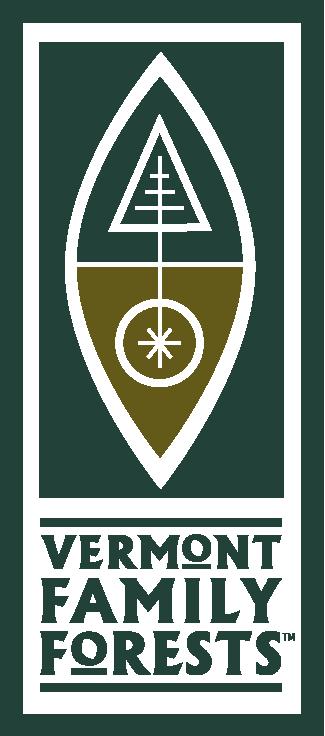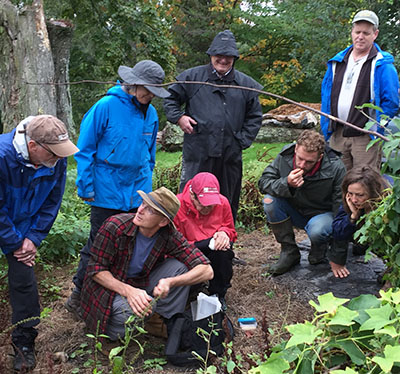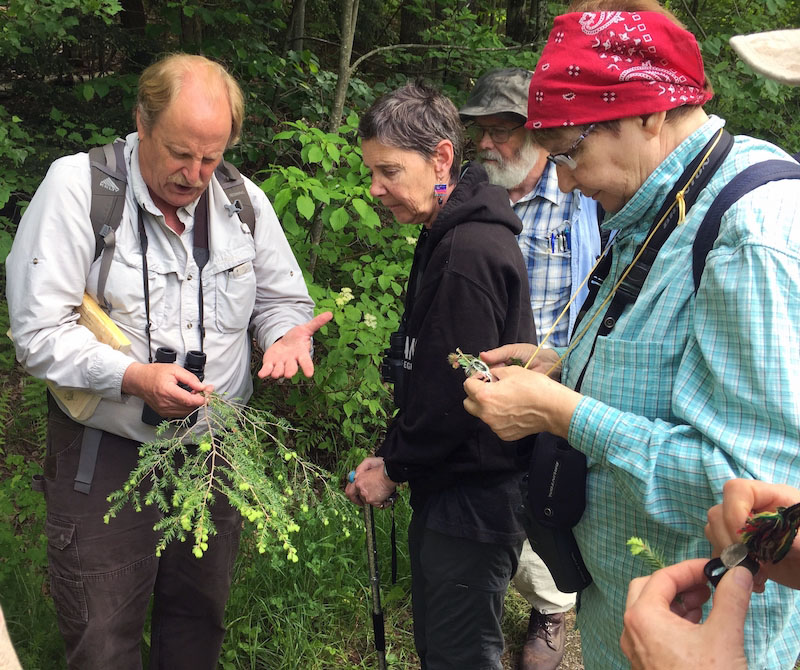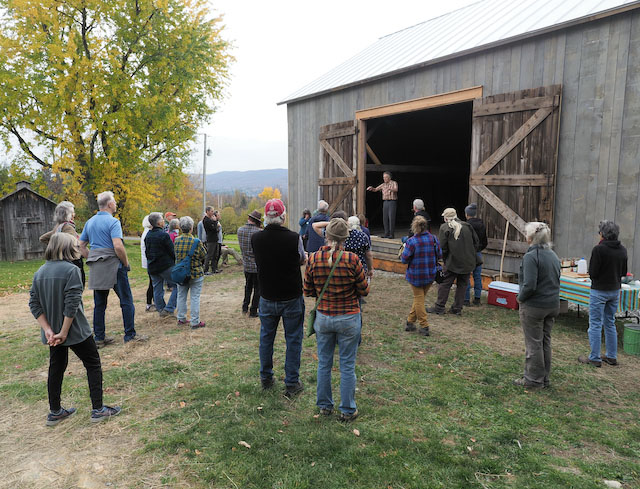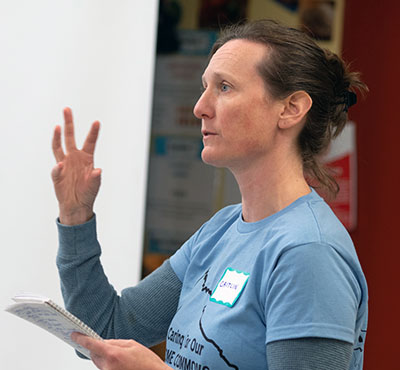
By David Brynn
In late March of 2025, Vermont Family Forests purchased 132 acres of land—126 of it in the northwest corner of Bristol and 6 acres in Monkton. We are thrilled to own this land and have many ideas for interacting with it in the future. We’ve named it The Commoners’ Return Forest for reasons that I’ll aim to explain below.
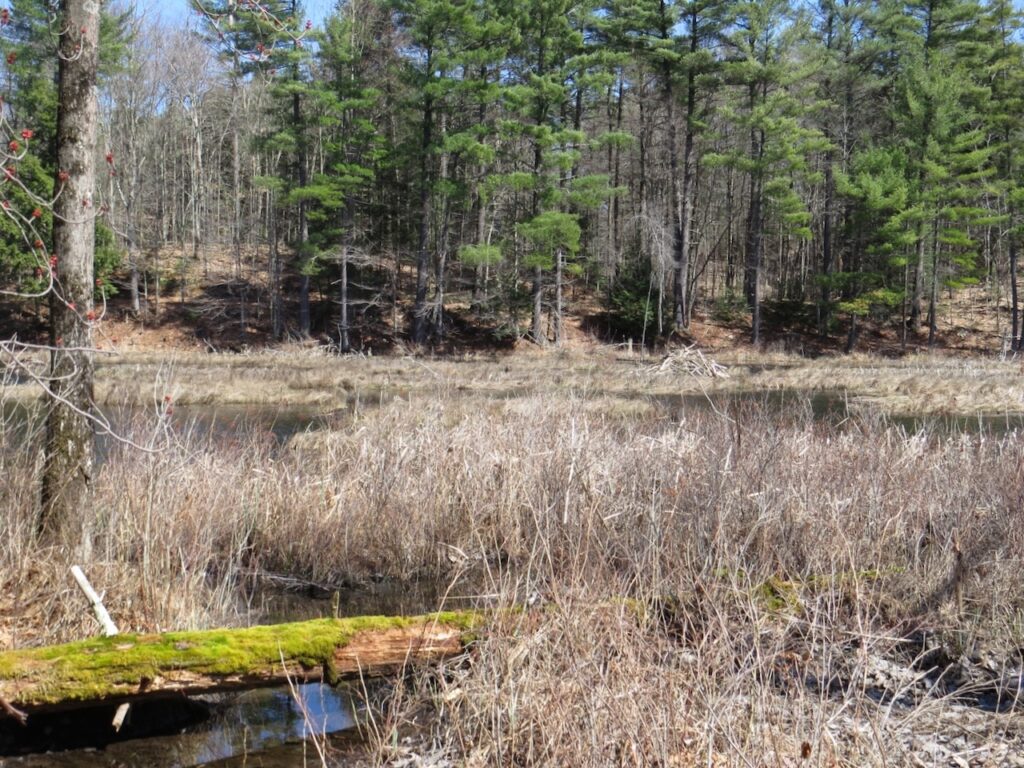
In 1762 or thereabout, Governor Benning Wentworth, the first governor of the colony of New Hampshire under King George III, granted the town of Pocock, now Bristol, to 63 settlers for about 20 English pounds apiece. His surveyors reserved 500 acres in the northwest corner of the township for Wentworth—land that was known as “The Governor’s Right.”
Of course, the land wasn’t his right—it was the homeland of the Western Abenaki people, who had lived there for some 3,000 years. Abundant rock chippings testify to their quarrying of the rocks there, especially the Cheshire quartzite, which they shaped into projectile points for arrows and spears.
Why the surveyors chose this land for the Governor’s Right isn’t clear to me. It is part of an area of steep, rocky outcrops—hence the name ecologist Eric Sorenson gave it: “Hardscrabble Hills.” The Governor’s Right is in the westernmost part of the Hardscrabble Hills and is now part of the Lands of the Watershed Center. More of this hardscrabble area lies to the east and north of the Governor’s Right, which is where our newly purchased land is located.
The lands to the east of the Governor’s Right lie in a north-south valley. These rolling lands are the headwaters of Little Otter Creek and the Lewis Creek, flowing southwest and northeast, respectively. From this valley, the VFF land rises to the west at a 30% slope. Soils here are deep, rich, and productive.
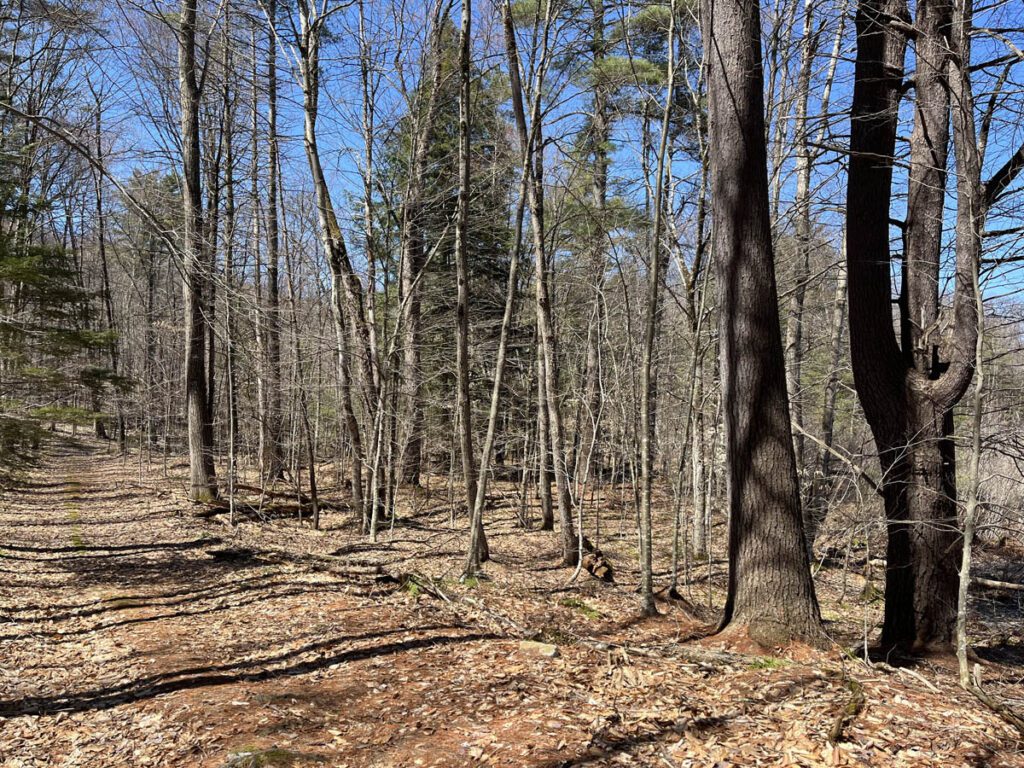
Sheep fencing and barbed wire recall past farming on what is now forestland. Oaks, beech, sweet birch, aspen, and white pines moved in when the sheep and cows moved out. Over the town line in Monkton, these forests are pocked with deep excavations—remnants of iron ore beds mined and shipped to Vergennes to make a variety of products including cannonballs for the War of 1812 and horse nails in the 1850s. Other pits and troughs on the land are remnants of kaolin mining, which took place here until about 1975.
In 1975, the A. Johnson Company (AJCO) purchased 100+ acres of the area west of Hardscrabble Road in Bristol. On the east side, they acquired land south of Monkton Town Highway 26, which included 20 acres of Bristol land and 6 acres in Monkton. AJCO enrolled the land in UVA and managed it as an industrial tree farm for almost 50 years. The land’s good soil grew good quality timber. The slopes dried out quickly in springtime, so the land served as a spring timber lot to keep AJCO logging crews busy and to stock their mill in Bristol, where 70 or more people earned their living.
AJCO made their last cut on this land in 2024. A few beautiful, economically mature red oaks—what Gifford Pinchot would have called “ripe and ready for the axe”—were marked to be cut with red and also blue paint stripes, but fortunately for VFF we closed on the lands and the trees were left unharvested. After the timber sale was completed, a skidder pushed in waterbars here and there to prevent soil erosion and to close much of the access to vehicles. Logging roads crisscross the land—probably 25-30% of the forest was traversed by skid trails or truck roads one time or another.
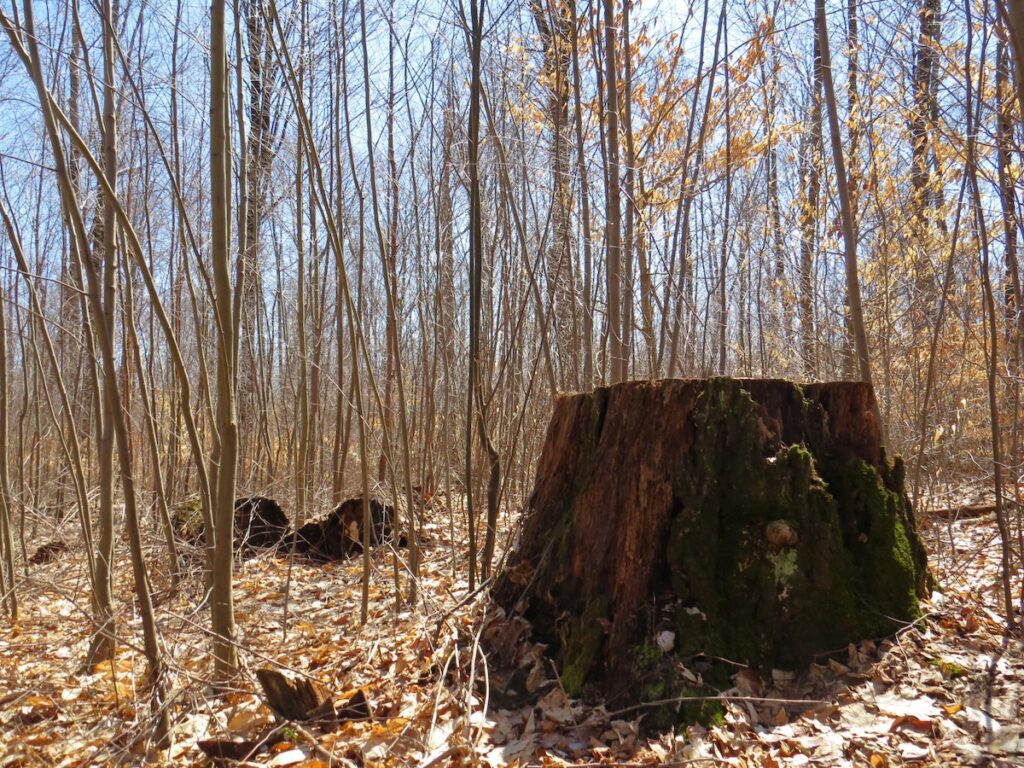
On March 25, 2025, industrial forestry on the land ended when Vermont Family Forests acquired the land for more than $3000 per acre. That’s not a good investment when figured in traditional economic terms, especially considering VFF’s intention to conserve the land from development. Our first and foremost purpose in acquiring the land was to practice organic family forestry based on principles VFF adopted in 1995, when we coined the phrase “Family Forest,” as opposed to ‘Non-industrial Private Forest” (NIPF) or “Tree Farm.”
By definition, sustainable forestry requires that the forest management practices be at once economically feasible, ecologically viable, and socially responsible. Achieving all of these concurrently is no small task! VFF’s family forest ecosystem conservation goes one step further and seeks to put forest health first, on behalf of the whole forest community. That means taking special care of the ecological commons—namely water, air, and wildlife—which are largely left out of the equation in our current financial systems.

The original native American holders of the land saw the forest as home. VFF seeks that, though we know that we will never achieve it as fully. To put forest health first recognizes—as Aldo Leopold wrote in A Sand County Almanac— that health is the capacity of land for self-renewal. Though humans are not essential to that self-renewing capacity, they can have a role to play in correcting ecological imbalance and exploitation from mining, steep roads, introduction of plants from away, soil compaction and erosion, and more.
Such exploitation is contrary to the life forces that push unmanaged forest ecosystems to be diverse and productive in ecological terms. We will aim for mutually beneficial relationship with the land, creating an ecological commons of healthy, largely self-willed land, as measured by tangible deliverables:
- Clean, clear, highly oxygenated water,
- Diverse, native wildlife populations,
- Robust sequestration and storage of atmospheric carbon, and
- Ecological resilience in the face of gully-washing storm events.
Our approach occupies a middle point on the spectrum between intensive forest manipulation and wild, self-willed forests, putting our ecological commons first. Commoning doesn’t happen without commoners—people who step up to caring for our shared commonwealth. We aim to reanimate commoning on this land, which is why we’ve called it the Commoners’ Return.
That, in a nutshell, is what VFF intends to do with these special lands, the purchase of which was made possible by Lester and Monique Anderson of Lincoln. Deep gratitude to them for all the conservation work their generosity has supported.
May the Commoners’ Return Forest be with us!
~ David

